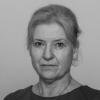Programmaleider Verpleging, Verzorging en Ouderenzorg
Publicatie
Publicatie datum
Surveillance technology: an alternative to physical restraints? A qualitative study among professionals working in nursing homes for people with dementia.
Zwijsen, S.A., Depla, M.F.I.A., Niemeijer, A.R., Francke, A.L., Hertogh, C.M.P.M. Surveillance technology: an alternative to physical restraints? A qualitative study among professionals working in nursing homes for people with dementia. International Journal of Nursing Studies: 2012, 49(2), p. 212-219.
Download de PDF
Background: Working with surveillance technology as an alternative to traditional restraints creates obvious differences in the way care is organised. It is not clear whether professional caregivers find working with surveillance technology useful and workable and whether surveillance technology is indeed used to diminish restraint use. Objectives: The aim of this study was to obtain an insight into the view of Dutch dementia care professionals on the feasibility of surveillance technology as an alternative to physical restraints. Design: Qualitative study. Setting: The study was carried out in seven nursing homes for people with dementia in The Netherlands. Participants and methods Semi-structured interviews were held with nine key persons from seven nursing homes for people with dementia. Also, six focus group discussions were held with groups of nurses and two focus group discussions were held with multidisciplinary teams. Results: The dementia care professionals named three different ways in which surveillance technology can be used: to provide safety in general, to provide additional safety, and to provide more freedom for the residents. In addition to this, the dementia care professionals mentioned four limitations in the use of surveillance technology: it is unable to prevent falling, it cannot guarantee quick help, it does not always work properly, and it could violate privacy.Conclusion: Dementia care professionals consider surveillance technology supplemental to physical restraints, rather than as an alternative. Improvement of devices and education of care professionals might increase the support for using surveillance technology as an alternative to physical restraints. (aut. ref.)
Background: Working with surveillance technology as an alternative to traditional restraints creates obvious differences in the way care is organised. It is not clear whether professional caregivers find working with surveillance technology useful and workable and whether surveillance technology is indeed used to diminish restraint use. Objectives: The aim of this study was to obtain an insight into the view of Dutch dementia care professionals on the feasibility of surveillance technology as an alternative to physical restraints. Design: Qualitative study. Setting: The study was carried out in seven nursing homes for people with dementia in The Netherlands. Participants and methods Semi-structured interviews were held with nine key persons from seven nursing homes for people with dementia. Also, six focus group discussions were held with groups of nurses and two focus group discussions were held with multidisciplinary teams. Results: The dementia care professionals named three different ways in which surveillance technology can be used: to provide safety in general, to provide additional safety, and to provide more freedom for the residents. In addition to this, the dementia care professionals mentioned four limitations in the use of surveillance technology: it is unable to prevent falling, it cannot guarantee quick help, it does not always work properly, and it could violate privacy.Conclusion: Dementia care professionals consider surveillance technology supplemental to physical restraints, rather than as an alternative. Improvement of devices and education of care professionals might increase the support for using surveillance technology as an alternative to physical restraints. (aut. ref.)

